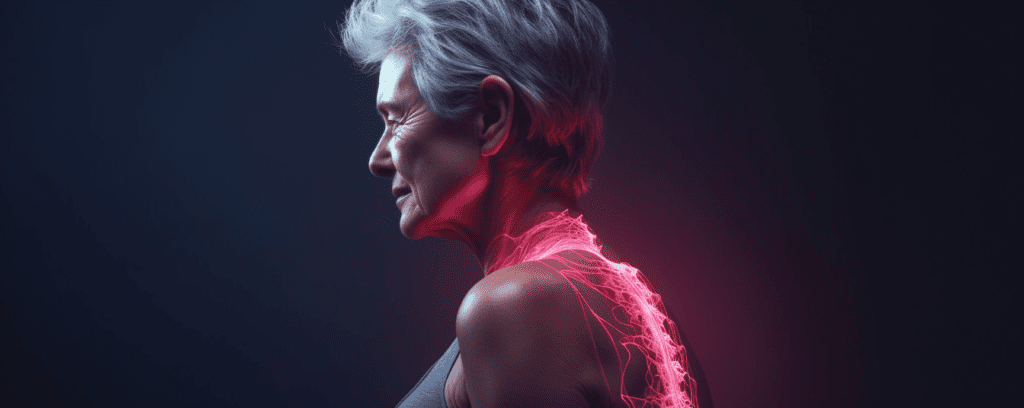Back pain can be challenging to diagnose because there are so many conditions, injuries, and lifestyle changes that can cause it. If you suffer from severe back pain, you may be eligible for disability benefits through the Social Security Administration. However, qualifying can be a challenge unless you have medical evidence of a condition that’s affecting your upper or lower back pain.
11 Risk Factors for Back Pain
- Poor posture
- Obesity
- Smoking
- Pregnancy
- Old mattress
- Injury
- Age
- Genetics
- Stress
- Arthritis and other medical conditions
- Lack of exercise
This list includes some of the most common causes of upper and lower back pain, although there are several potential causes and risk factors. Some causes of back pain may not qualify for SSA or VA disability benefits, even if you consider your pain to be severe.
Instead, you’ll usually need to prove that your pain results from another condition, like stenosis, disorders of the facet joints, spinal cord injury, degenerative disc disease, or rheumatoid arthritis. Submitting a statement that details your functional limitation and pain severity according to the pain disability scale could help you get approval for your benefits application.
11 Risk Factors for Back Pain
The following conditions are risk factors of back pain. In other words, they may cause damage to your spine and other areas of your back, leading to a chronic condition of pain that pain medication, physical therapy, spinal manipulation, and other treatment options may not relieve.

1. Poor Posture
Poor posture is a common cause of neck pain and upper and low back pain. Research suggests a connection between increased smartphone usage and poor posture, but poor posture can also stem from sitting for long periods for work, not getting enough exercise, and aging.
Poor posture causes the spine to move out of alignment, putting extra pressure on the cervical spine. The result can be nerve root compression, a curvature of the spine, shoulder pain, neck pain, back pain, and even jaw pain. Some people experience more severe symptoms, like respiratory problems, impaired digestion, and poor circulation.
2. Obesity
Obesity can cause poor posture that can lead to back pain, but carrying extra weight in your belly area can also cause your lumbar spine and cervical spine to do more work. The more weight you have, the more weight your spine needs to support, leading to chronic low back pain or upper back pain.
The lower back is usually where you’ll feel pain the most if you’re overweight. With extra weight in the waist area, the pelvis will move forward and strain the lower back. This situation can lead to back problems like sciatica or ruptured or herniated discs. Any current spinal canal issues, like stenosis or arthritis, might also become worse if you’re overweight.
3. Smoking
Many people aren’t aware that smoking can do much more to your body than affect your lungs negatively. Smoking is also associated with back pain. Smoking can cause the cartilage between your spinal discs to break down over time, leaving little cushion between them to prevent pain. Smoking also interferes with blood flow, so your back muscles may not get adequate blood flow to them to aid healing and pain.
If you already have back pain, smoking may exacerbate it. Smoking can cause inflammation in the body, which slows healing and can cause you more pain, potentially making your symptoms worse.
4. Pregnancy
Back pain is a common symptom of pregnancy. During the later stages of pregnancy, muscles separate, and ligaments relax near your pelvis and back to allow your body to shift as needed during labor. When this happens, your spine also loosens, causing severe back pain, whether you’re sitting, lying down, or standing.
Pregnancy may also lead to poor posture due to the extra weight of carrying a baby. Toward the last weeks of your pregnancy, you might notice increased spine and muscle strain resulting from postural changes.
5. Old Mattress
The Sleep Foundation recommends purchasing a new mattress every six to eight years to avoid back pain and sleeping problems. Old mattresses can wear down over time, causing uneven areas and leading to a lack of support for your back, neck, and shoulders.
Some people experience less pain with a firm mattress, while others prefer a soft mattress. It’s a good idea to test various mattresses in-store to find one that feels comfortable and supportive for your body.
6. Injury
A back injury that happened several years ago and didn’t seem to cause you much trouble then could lead to back pain now if you didn’t seek treatment. Sports, lifting, and vehicle accidents are common causes of injuries that could trigger back pain.
If you experience back pain soon following an injury, it’s in your best interest to see a doctor. Early treatment can sometimes prevent back pain from becoming a chronic condition and can prevent further damage.
7. Age
It’s normal to experience back pain to a certain degree as you age. Your spine and back muscles age along with the rest of your body, so you may experience tightness, strains, and other pains that affect your sleep, ability to exercise, and the way you live your everyday life. Spinal stenosis – the narrowing of the spine – is also more common in older people.
It would be best if you didn’t chalk it all back pain up to age, though. If you experience severe back pain every day that inhibits your ability to walk or move naturally, you should seek medical help. It can be easy to injure your back without knowing immediately, or you may have an underlying condition that you need treatment for.
8. Genetics
Research suggests that genetics may play a role in back pain. A study published in PLOS Genetics found that three genes, specifically, have ties to chronic back pain. If either of your parents suffers from chronic back pain, then there’s a possibility you will, too.
Similarly, specific conditions that affect the spinal cord may run in families. Disc degeneration and herniation, for example, could be more prominent in some families than others, leading to diagnoses of the conditions at a much earlier age than average.
9. Stress
Think about the last time you felt stressed. Did your shoulders and neck tighten? Did your back tense? How did they feel when you relaxed? It’s common for these areas of your body to feel just as much stress as your mind does, leading to severe pain once you’ve relaxed and are more aware of your body.
Consistent stress and anxiety can lead to chronic back pain. The tension in your body tends to move right into your back, shoulders, and neck when you’re stressed. If you have frequent bouts of stress, it’s important to find ways to relax, whether it’s taking a few minutes of your day for meditation or yoga or going on a quick walk to grab some fresh air. Consider making an appointment with your doctor if your stress-related back pain is becoming intrusive, and you’re finding it difficult to wind down when you’re stressed.
10. Arthritis and Other Medical Conditions
When you apply for SSDI, it’s necessary to have plenty of medical evidence in your corner to prove that your back pain occurs because of another condition, since pain alone won’t qualify you. Often, back pain arises from other medical problems that affect the back, like arthritis, osteoporosis, ruptured discs, stenosis, or spinal arachnoiditis.
If you haven’t yet gotten a medical diagnosis for your back pain, but you believe that there’s an underlying condition causing it, you should pursue a diagnosis. Some conditions can take a while to diagnose, so it’s beneficial to keep a log of any symptoms you experience, their frequency, and their severity.
11. Lack of Exercise
Working out too hard and not using the proper form can lead to exercise-related back injuries. But not working out enough can also cause back pain. That’s because inactivity leads to weakened back muscles, and your back muscles are a crucial part of your core. It’s essential to keep these muscles strong and toned to support the bulk of your weight and decrease pressure on your spine. The Centers for Disease Control and Prevention (CDC) recommends at least 30 minutes of exercise five days per week for most individuals.
Is Chronic Back Pain a Disability?
A back pain disability may be a challenging one to confirm with the Social Security Administration. A general diagnosis of back pain usually won’t qualify you for disability benefits because pain isn’t an eligible diagnosis. Chronic back pain without a pinpointed cause doesn’t include enough proof for the SSA to determine that your chronic pain causes you problems with necessary daily tasks, like walking or bathing.
However, if you applied for Social Security disability benefits after receiving a diagnosis for a medical condition causing your back pain, you may become eligible. For example, your doctor may order a CT scan, MRI, x-ray, or another diagnostic test to check for various spinal disorders.
If imaging shows that you have a herniated disc, damaged vertebra, spinal stenosis, degenerative arthritis, or another condition, the SSA may approve your Social Security disability benefits. Along with medical evidence, the SSA may require you to submit a statement explaining the pain intensity you experience and how it disrupts your everyday life.
Once you submit a claim based on chronic or acute low back pain or other types of back pain, the SSA follows several steps to determine whether you qualify. First, the SSA considers if your income falls within its guidelines to be eligible for benefits. Next, the SSA considers medical evidence you’ve sent in determines if your symptoms and condition meet one of its medical eligibility categories. If so, the SSA will then decide if you can continue work you’ve done previously or can begin a new type of work with your condition.
If your back pain and condition is severe enough to prevent you from working in a capacity that can earn you a living wage, the SSA could approve your disability claim. You also may become eligible for SSDI back pay that dates back to the date that you first applied for benefits. If you believe the SSA denied your claim unfairly, you can consult a Social Security disability attorney for assistance.
Back Pain and Social Security Disability
Back pain alone won’t qualify you for Social Security disability benefits because it’s a symptom of other conditions. Pinpointing the cause of your back pain to an eligible condition is the key to an SSA approval for benefits.
Some eligible conditions include arthritis, stenosis, and ruptured or herniated discs that are untreatable. Your symptoms must also be severe enough to impact your daily life, making it challenging for you to work, dress, bathe, drive, or complete other daily tasks. Seeking the help of an excellent medical team and a disability attorney could make the application process for disability benefits go smoother.
